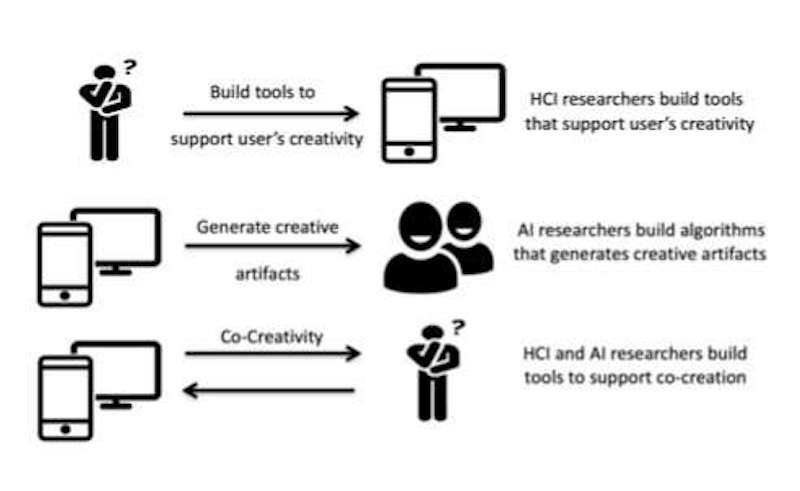 Three main trends in creative systems: creativity support tools, fully autonomous systems and co-creative systems. Credit: Karimi et al.
Three main trends in creative systems: creativity support tools, fully autonomous systems and co-creative systems. Credit: Karimi et al.
Aug. 8, 2018 (TechXplore) -- Computer programs assist humans in a variety of ways, including in their creative endeavors. Researchers at UNC Charlotte and the University of Sydney have recently developed a new framework for evaluating creativity in co-creative systems in which humans and computers collaborate on creative tasks.
The team of researchers has been investigating how to develop AI-based creativity for several years. One of their previous studies questioned the source of creativity in instances where computer programs produce creative works alone or in collaboration with human agents, while another study developed AI to evaluate the creativity of individual designs.
"Creative systems are intelligent systems that can perform creative tasks alone or in collaboration," the researchers explained in their paper. "There are three main strategies by which the role of computers in creative systems can be characterized: fully autonomous systems, creativity support tools, and co-creative systems."
Fully autonomous systems are designed to generate creative artifacts without human assistance, using technological tools that include machine learning, production rules, and evolutionary approaches. On the other hand, creativity support tools are applications or programs that support a human user's creativity, allowing them to express their talent using technology-based methods.
(more)
READ MORE: TechXplore









-
1